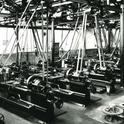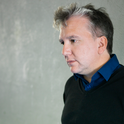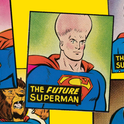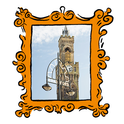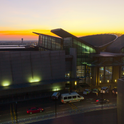The Arab of the Future 2: A Childhood in the Middle East, 1984-5 by Riad Sattouf (Two Roads, £18.99)
The acclaim of recent years for the work of Alan Moore, Posy Simmonds, Joe Sacco, Neil Gaiman and others means the genre of the graphic novel no longer suffers the condescension of critics. It has left the countercultural ghetto and gone global. This second volume of Riad Sattouf’s childhood memoir offers a fine example of its virtues.
It immediately engages us in a child’s-eye view of the 1980s, that of Riad as an endearing blond-haired six-year-old growing up in Colonel Gaddafi’s Libya and Hafez al-Assad’s Syria with his French mother and Syrian academic father. The framing and commentary provide an ironic perspective, both funny and poignant.
His father is an idealistic pan-Arabist with endlessly blighted aspirations for himself and his culture. Riad observes his ambivalence about the west—Syria has the best of everything, he claims, but craves Dunhill cigarettes, Japanese video recorders and Jack Daniel’s whiskey.
Beyond the intimate focus on family, school and village appear the horrors of a patriarchal society (including the honour killing of Riad’s aunt) and the larger outlines of corrupt and violent Middle East politics. (A technique used to similar effect in Marjane Satrapi’s graphic novel, Persepolis, her account of her coming of age during the Iranian Revolution.)
A more enjoyable introduction to understanding the everyday hopes and despairs of the Middle East’s middle class is hard to imagine.
The acclaim of recent years for the work of Alan Moore, Posy Simmonds, Joe Sacco, Neil Gaiman and others means the genre of the graphic novel no longer suffers the condescension of critics. It has left the countercultural ghetto and gone global. This second volume of Riad Sattouf’s childhood memoir offers a fine example of its virtues.
It immediately engages us in a child’s-eye view of the 1980s, that of Riad as an endearing blond-haired six-year-old growing up in Colonel Gaddafi’s Libya and Hafez al-Assad’s Syria with his French mother and Syrian academic father. The framing and commentary provide an ironic perspective, both funny and poignant.
His father is an idealistic pan-Arabist with endlessly blighted aspirations for himself and his culture. Riad observes his ambivalence about the west—Syria has the best of everything, he claims, but craves Dunhill cigarettes, Japanese video recorders and Jack Daniel’s whiskey.
Beyond the intimate focus on family, school and village appear the horrors of a patriarchal society (including the honour killing of Riad’s aunt) and the larger outlines of corrupt and violent Middle East politics. (A technique used to similar effect in Marjane Satrapi’s graphic novel, Persepolis, her account of her coming of age during the Iranian Revolution.)
A more enjoyable introduction to understanding the everyday hopes and despairs of the Middle East’s middle class is hard to imagine.

